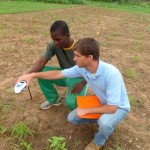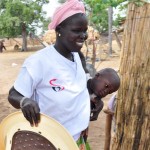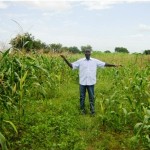May 2014—Astou Dieng is the chief nurse at Senegal’s Bagadadgi health post, based in a rural community more than 700 kilometers from Dakar and serving more than 17,500 individuals from 91 small villages. One of her main concerns is persuading community members to visit a health professional as soon as they are ill.

Thiès, Senegal—In the midst of a test plot marked with yellow flags, two young scientists work together amid multiple rows of small millet plants, manipulating an electronic device used to measure the strength of the plants. Neither seems to mind the light rain as they note the data registering from the machine.

Over the past 30 years, Senegal has expanded access to health services by shifting them deeper into its rural communities, where over 42 percent of the population still lives and where – in certain villages – only 12 percent of the population can access public health services annually.
New Rice for Africa, or NERICA, is a hardy, high-yielding rice varietal that USAID is helping bring to farmers, including Coulibaly. Through the United States' flagship food security initiative, Feed the Future, USAID works with grassroots organizations and producer cooperatives to make NERICA available on a large scale in Senegal to increase rice production, and in turn, improve families’ food security and incomes.

Agricultural producers in Senegal are finding that small improvements in their farming techniques can yield big benefits when it comes to protecting their livelihoods against risk during growing season. Conservation farming, which has been promoted in Senegal by USAID since 2009, is based on the premise of “doing more with less.” Farmers till and plant only a portion of their land each season, growing crops in small, evenly-spaced basins rather than plowing entire fields. Not only does most of the land remain undisturbed, but this technique reduces soil erosion and run-off during rainfall, helping the land to retain both water and nutrients.









Comment
Make a general inquiry or suggest an improvement.